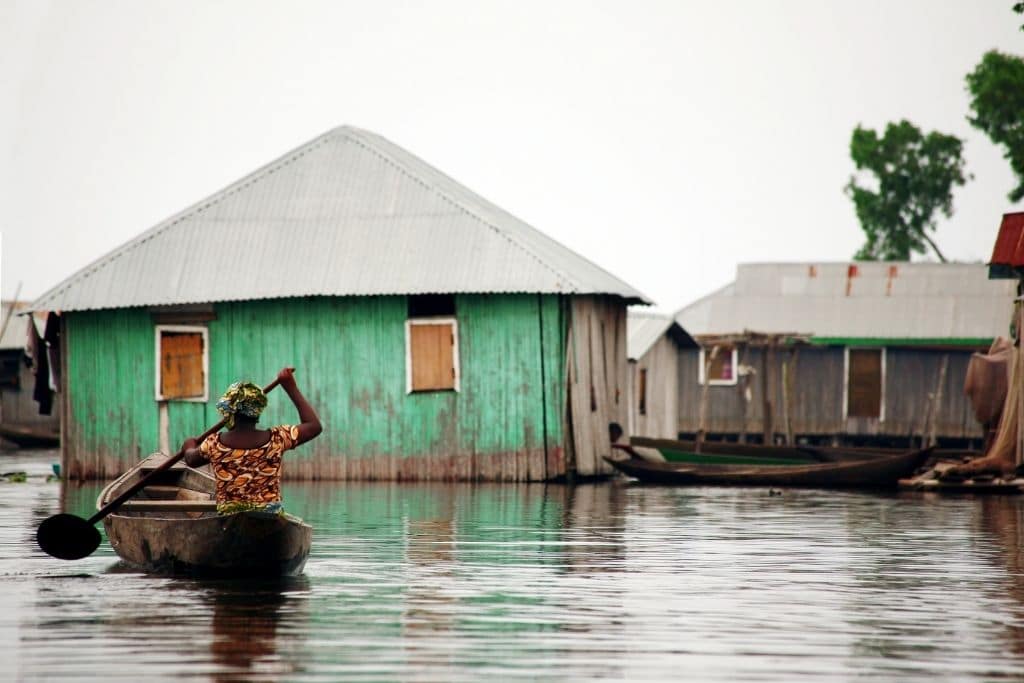The Intergovernmental Panel on Climate Change (IPCC) forecasts that by 2100, sea levels could be as much as 1.1 metres higher than they are today and no amount of emissions reduction can stop the near and mid-term impacts of this phenomenon. According to sea level rise projections, nearly one billion people will be exposed to much greater risks of flooding by mid-century. We take a look at the top 10 cities in the world most at risk of sea level rise flooding impact, according to the 2050 Climate Change City Index.
—
Sea Level Rise Projections
1. Bangkok, Thailand
Sea level rise projections put Thailand’s capital as the world’s most vulnerable city. The low-lying city – which has an average elevation of 1.5 metres above sea level – is already paying the price for this climate change-induced phenomenon. Following the deadly floods of 2011 – which cost the lives of hundreds of people – a fifth of the city was reportedly underwater. Yet the situation is expected to get worse.
According to the Organisation for Economic Co-operation and Development (OECD), 5 out of the 10.7 million people living in Bangkok could be exposed to flood risk by 2070 and the government’s continued inaction is slowly turning this scenario into reality. Torrential rains fill up the lower areas of the city and poor drainage systems do little to mitigate severe flooding events, which can sometimes persist for up to two months.

Earth.Org Sea Level Rise Projections by 2100 for two scenarios with the amount of rise in metres indicated (mild = 3m; extreme = 5m). Percentage and total population displacement indicated bottom right.
As Earth.Org sea level rise projections show, Bangkok is at an extremely high risk of sinking mainly due to ocean thermal expansion and ice melt. Combined with the predicted increase in the frequency of extreme weather events, one-third of the Thai capital could be completely submerged by 2050 and up to 11 million people displaced as a result.
2. Amsterdam, Netherlands
Second on the list is Amsterdam. Floods are nothing new for the capital of the Netherlands; 26% of the country is located below sea level and the majority of urban areas are built around water bodies with flood potential. For this reason, the city already has some of the world’s most sophisticated flood control systems in place, and have repeatedly been adjusted and improved over the last 50 years.
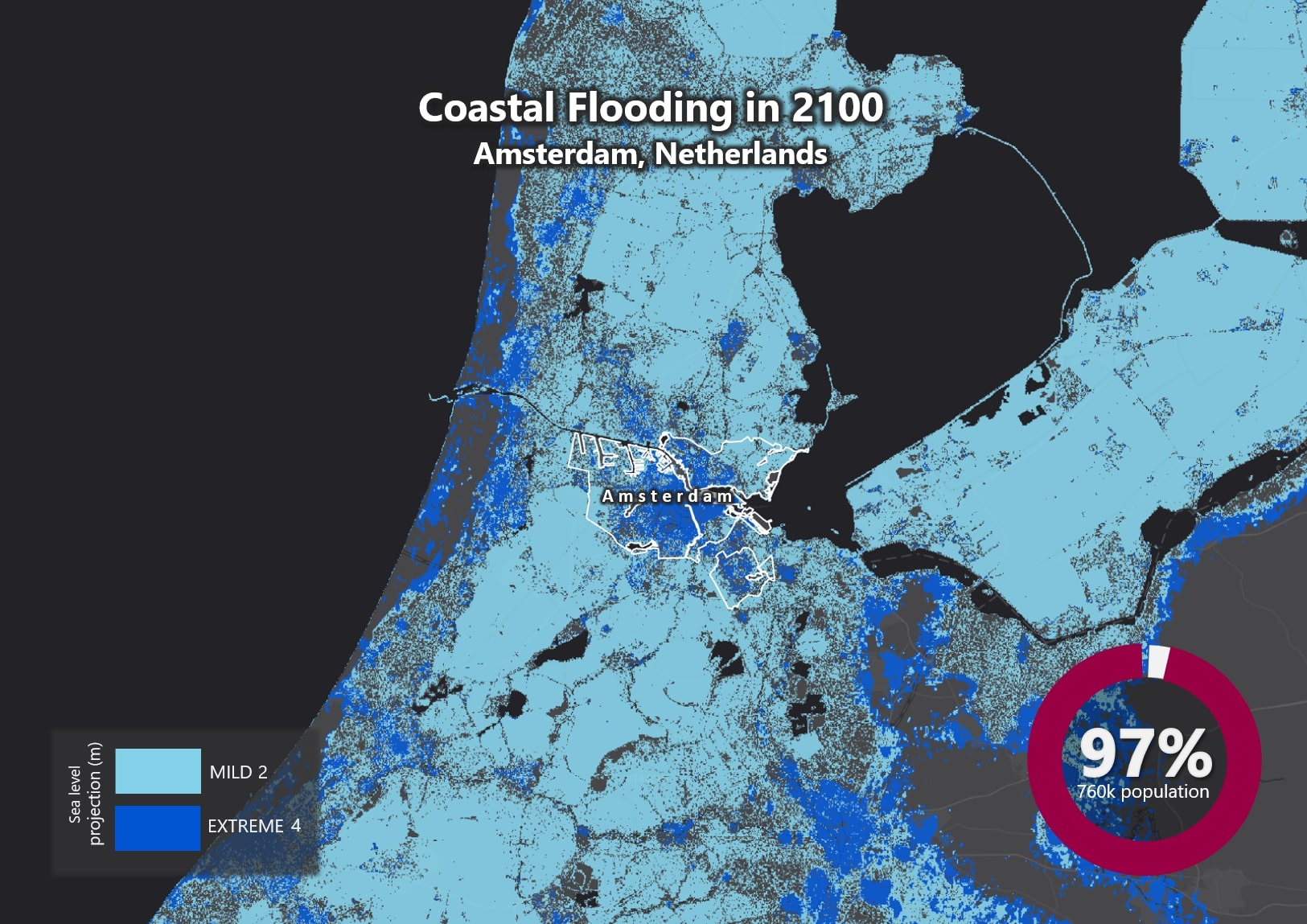
Earth.Org Sea Level Rise Projections by 2100 for two scenarios with the amount of rise in metres indicated (mild = 2m; extreme = 4m). Percentage and total population displacement indicated bottom right.
However, as the climate crisis rapidly worsens, sea level rise projections put Amsterdam in a dangerous position. According to estimates, the city’s current infrastructure will not be enough in the coming years as flooding events are predicted to get more intense and extreme. While they might be capable of handling one-metre rise in sea levels, estimates speak of a 1.2 to 2 metres rise over the next 79 years if greenhouse gas emissions are not reduced immediately and the melting of the Antarctic ice sheet accelerates. In this scenario, current infrastructures would likely struggle and more than 700,000 people – equivalent to 97% of the city’s total population – would be displaced by the end of the century.
3. Ho Chi Minh City, Vietnam
A combination of high tides, heavy rains, overflow in the Saigon and Dong Nai rivers, and land subsidence due to rapid groundwater extraction puts Ho Chi Minh City high on the list of the cities most vulnerable to sea level rise. Nearly 45% of Vietnam’s capital is located less than one metre above sea level and recurrent floods are an ordinary occurrence. However, tide-draining swamps that once protected areas most at risk of flooding have slowly been filled up to build housing, leading to record-breaking river tides that not only cost millions of dollars in damage but also put the lives of hundreds of thousands of people at risk.
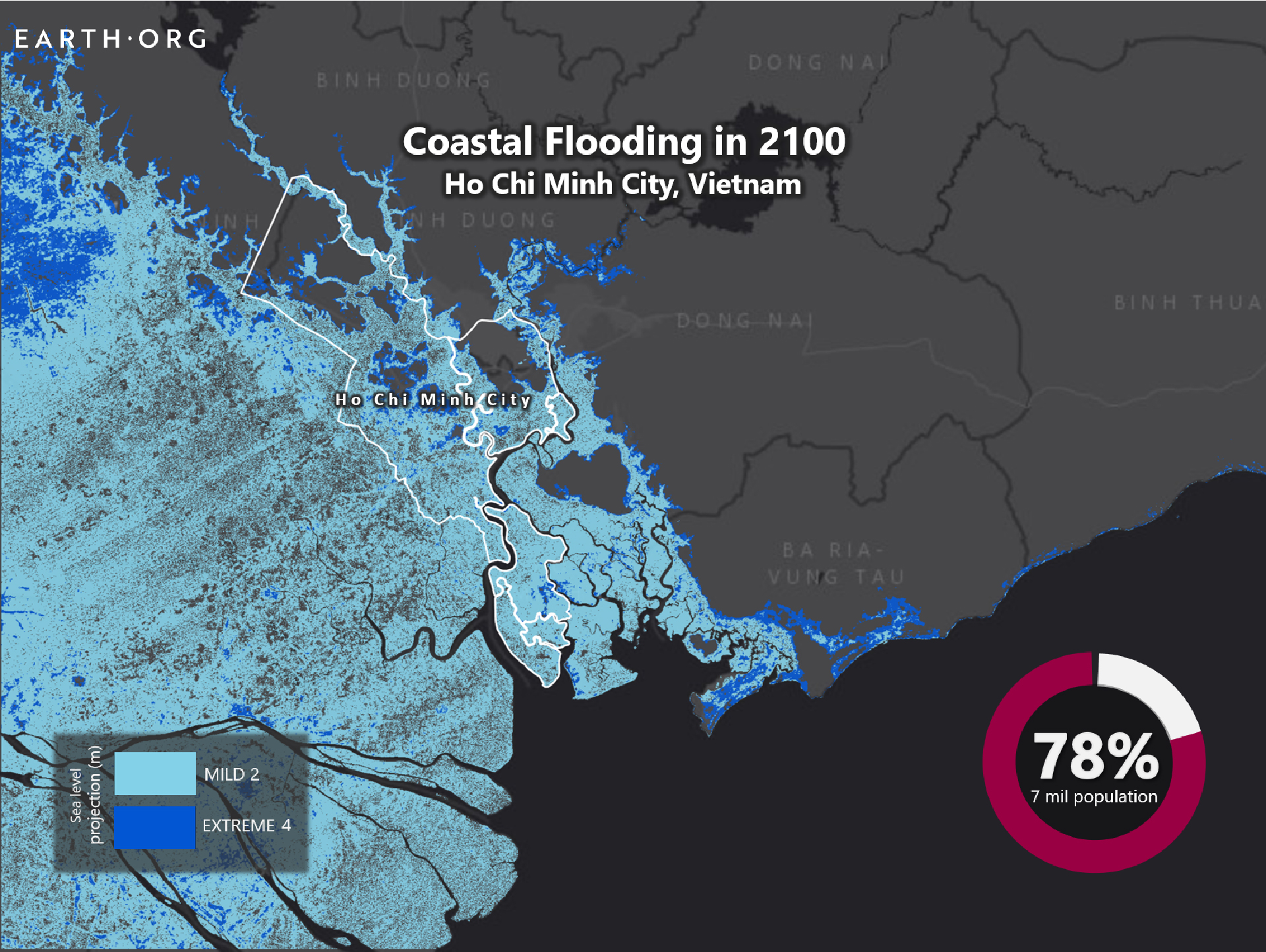
Earth.Org Sea Level Rise Projections by 2100 for two scenarios with the amount of rise in metres indicated (mild = 2m; extreme = 4m). Percentage and total population displacement indicated bottom right.
As global temperatures rise, sea levels are estimated to rise by more than one metre and nearly 20% of Ho Chi Minh City’s area will be flooded by 2100. According to Earth.Org’s sea level rise projections, this would result in the displacement of nearly 7 million people, a majority of which live in the Can Gio coastal district.
4. Cardiff, United Kingdom
The Welsh capital was named one of the world’s cities most at risk from global warming, with sea level rise among the most concerning issues. Scientists predict a 21 to 68 centimetre rise in sea levels by 2096, which would result in most of the city being underwater. At the current rate, urban areas that are currently home to more than 350,000 people are also expected to flood at least once a year by 2050.
The situation is made worse by the fact that Cardiff is built around three rivers that flow into the second-highest tidal estuary in the world, significantly elevating the risk of flooding, especially during intense rain events, which are already a regular occurrence in the city.
While the capital is particularly at risk, almost 11% of all properties in Wales are threatened by sea level rise and flooding. These events have already cost the region over £200 million (almost US$250 million) in damage each year.
5. New Orleans, US
During hot and humid summers, New Orleans is frequently hit by heavy showers and thunderstorms. When these coincide with high tides, flash floods occur. The city’s low elevation in relation to sea level, coupled with serious problems in the drainage system and the fact that it sits between wetlands, the Mississippi River, and two major lakes, significantly increases the severity of flooding.
The devastating impacts of extreme weather events on the low-lying coastal city were clearly demonstrated when Hurricane Katrina triggered deadly floods in 2005. On that occasion, half of New Orleans dropped below sea level, resulting in over 1,800 fatalities and US$150 billion in damage.
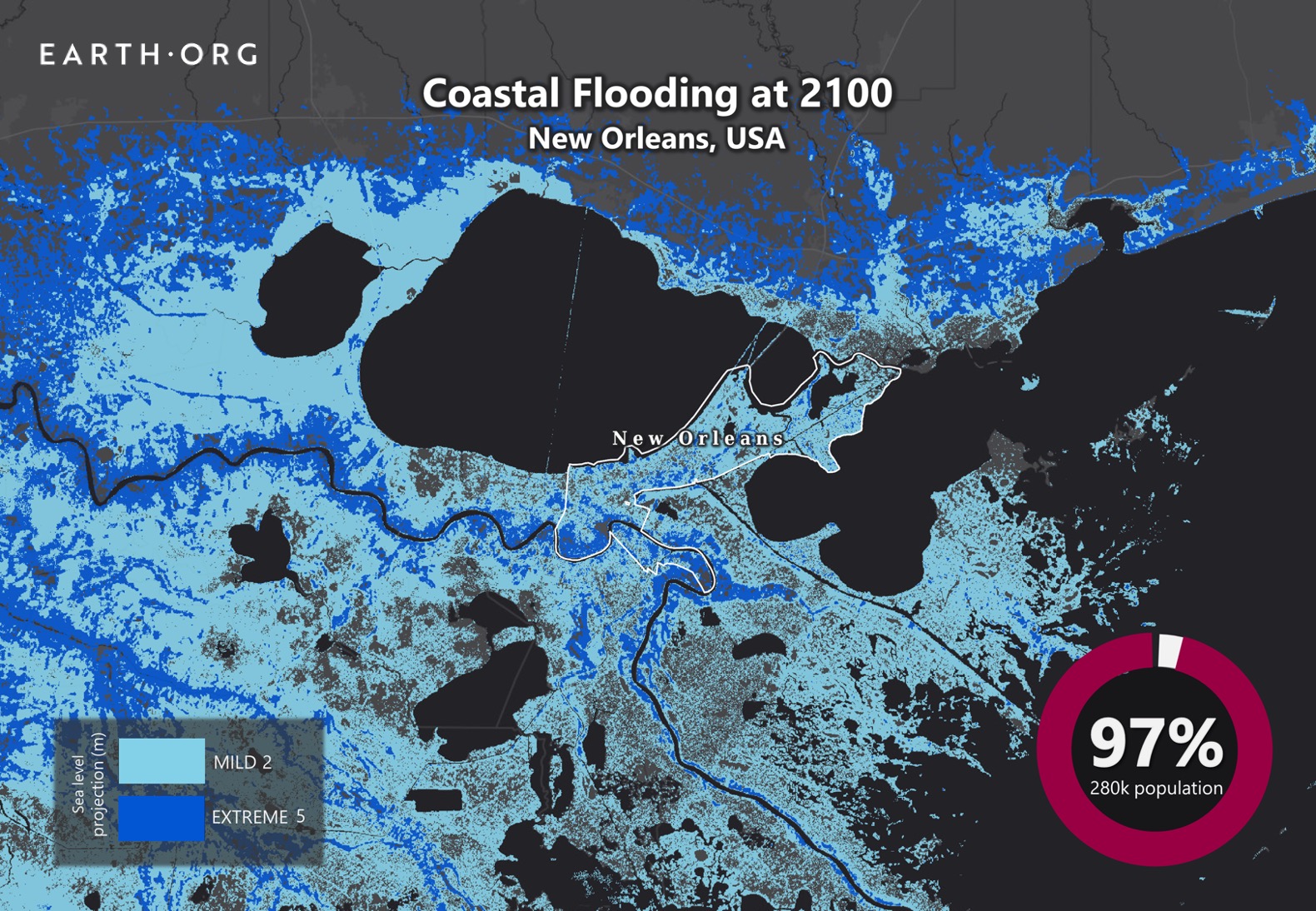
Earth.Org Sea Level Rise Projections by 2100 for two scenarios with the amount of rise in metres indicated (mild = 2m; extreme = 5m). Percentage and total population displacement indicated bottom right.
According to a recent report, sea levels in Louisiana could rise, on average, by about one foot (0.3 metres) by 2050 and up to two feet (0.6 metres) by the end of the century. Under a more extreme scenario – which takes into account of other weather events that are likely to worsen in the coming years due to climate change – sea level rise could see 97% of the population in New Orleans displaced, which is by far the state’s most affected area.
You might also like: What Is Causing Sea Level to Rise?
6. Manila, Philippines
There are few other cities as vulnerable to sea level rise as metropolitan Manila. The capital of the Philippines – one of the most disaster-prone countries in the world – sits partly beneath sea level due to intense groundwater pumping. Despite being hit by 20 typhoons a year on average, the city’s poor drainage system struggles to keep pace with heavy rainfall and evacuate water fast enough to avoid flooding.
Sea level rise has already led to the displacement of millions of people. Because leaving the city would mean losing their jobs as well as access to healthcare and other benefits from urban infrastructure, an estimated 3 million people were forced to relocate to informal settlements within the city, so-called ‘shanty towns’. Here, however, they often lack access to basic services such as water, toilets, and electricity.
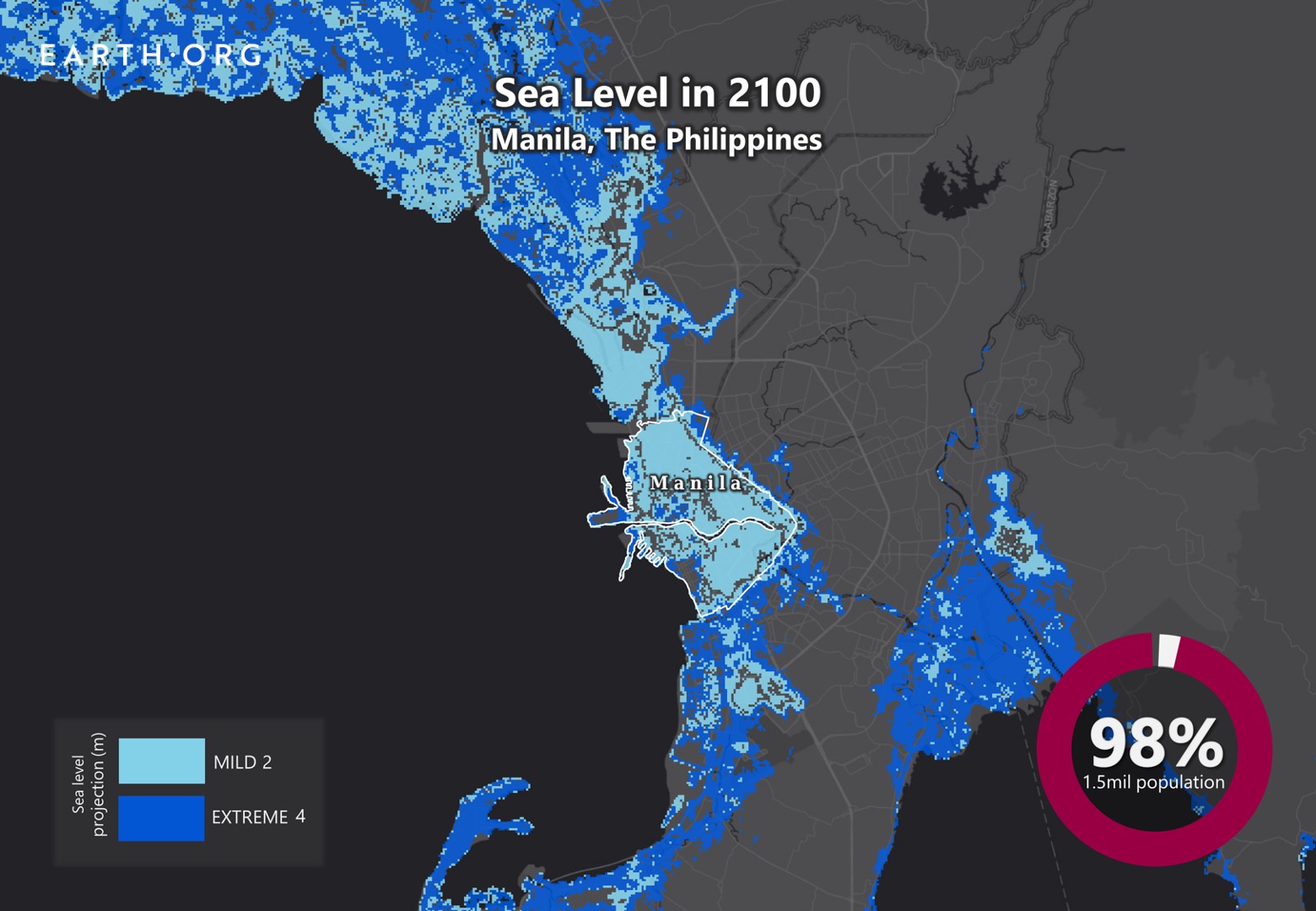
Earth.Org Sea Level Rise Projections by 2100 for two scenarios with the amount of rise in metres indicated (mild = 2m; extreme = 4m). Percentage and total population displacement indicated bottom right.
Sea level rise projections indicate that climate change will only amplify the threats of material damage and population displacement that Manila’s floods already present. A recent study shows that the capital city is already sinking at an alarming rate of 0.2 metres per year, seven times faster than the global rate of sea level rise. If this trend continues, almost the entire population of Manila will be displaced by the end of the current century, Earth.Org found.
7. London, United Kingdom
Cardiff is not the only city feeling the effects of climate change in the UK. Like any city built around a major river, London is particularly vulnerable to flooding as a result of global sea level rise.
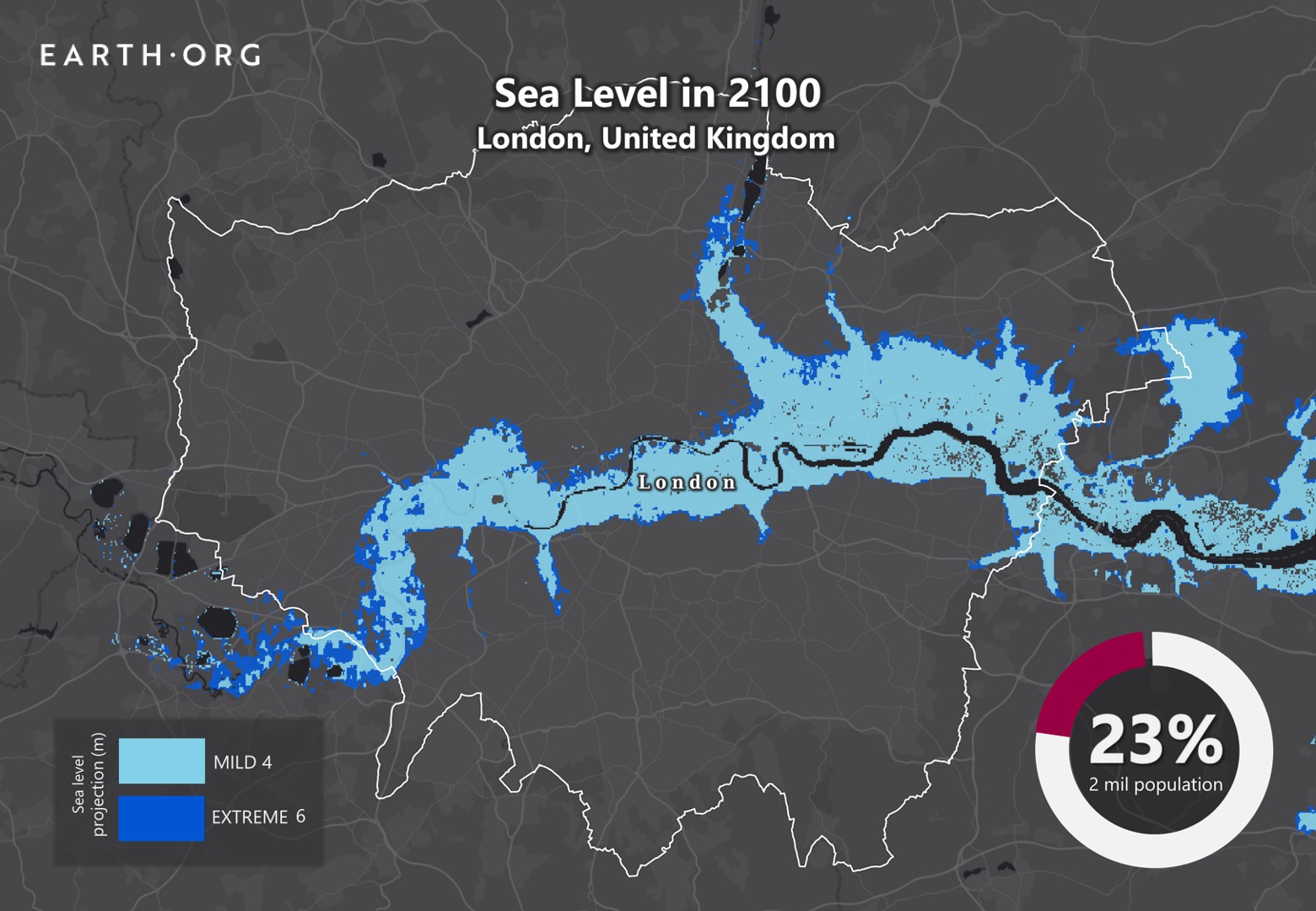
Earth.Org Sea Level Rise Projections by 2100 for two scenarios with the amount of rise in metres indicated (mild = 4m; extreme = 6m). Percentage and total population displacement indicated bottom right.
Aware of the imminent threat, the city built an intricate flood defence system. Completed in 1982, it spans 520 metres and lifts up 10 steel gates to shut off the Thames’ flow, guarding London against tidal surges. Nevertheless, experts warn that these barriers will not save the city from potential flooding past 2070, considering the current pace of sea level rise. Earth.Org found that, in the absence of new barriers and other preventive measures, 23% of the population – equivalent to almost 2 million people – will be displaced.
8. Shenzhen, China
Besides having nearly 130,000 square kilometres of coastal area at or below 10 metres above sea level, many regions in China are prone to climate change-induced flooding and severe storms, threatening even non-coastal areas. Among the urban areas most vulnerable to rising tides is the southeastern city of Shenzhen located in the Guangdong Province.
The metropolis is part of a growing list of cities that are suffering from extreme weather conditions. Its vulnerability is laid bare every summer during the typhoon season, the intensity of which worsens every year. Rising seawater is also eroding coastal land and natural barriers that prevent water from reaching the city. Particularly at risk is the Nanshan district, a large part of which will be inundated by 2100 under the current seal level rise scenario.
In a bid to mitigate and adapt to sea level rise and powerful storms, China has launched the so-called ‘sponge city’ initiative with Shenzhen becoming one of the earliest adopters of the concept. The city integrated the project into regional urban development plans by implementing rainfall infiltration, retention, and storage in new construction projects to make urban land capable of absorbing and reusing water coming from storms and floods.
9. Hamburg, Germany
Sea level rise has been an issue in Hamburg for decades. Following the traumatising 1962 flood – which led to the Elbe river to swell and inundate one-sixth of the city – the local government started developing infrastructure to mitigate the impact of rising sea waters. These worked until 2017, when another record-breaking storm caused the Elbe to rise by 2.76 metres and flood the iconic fish market. In response, the dikes – barriers used to regulate or hold back water from water bodies – have been raised from five metres to a varying heights of 7.5 to 9.25 metres since they were first built nearly six decades ago.
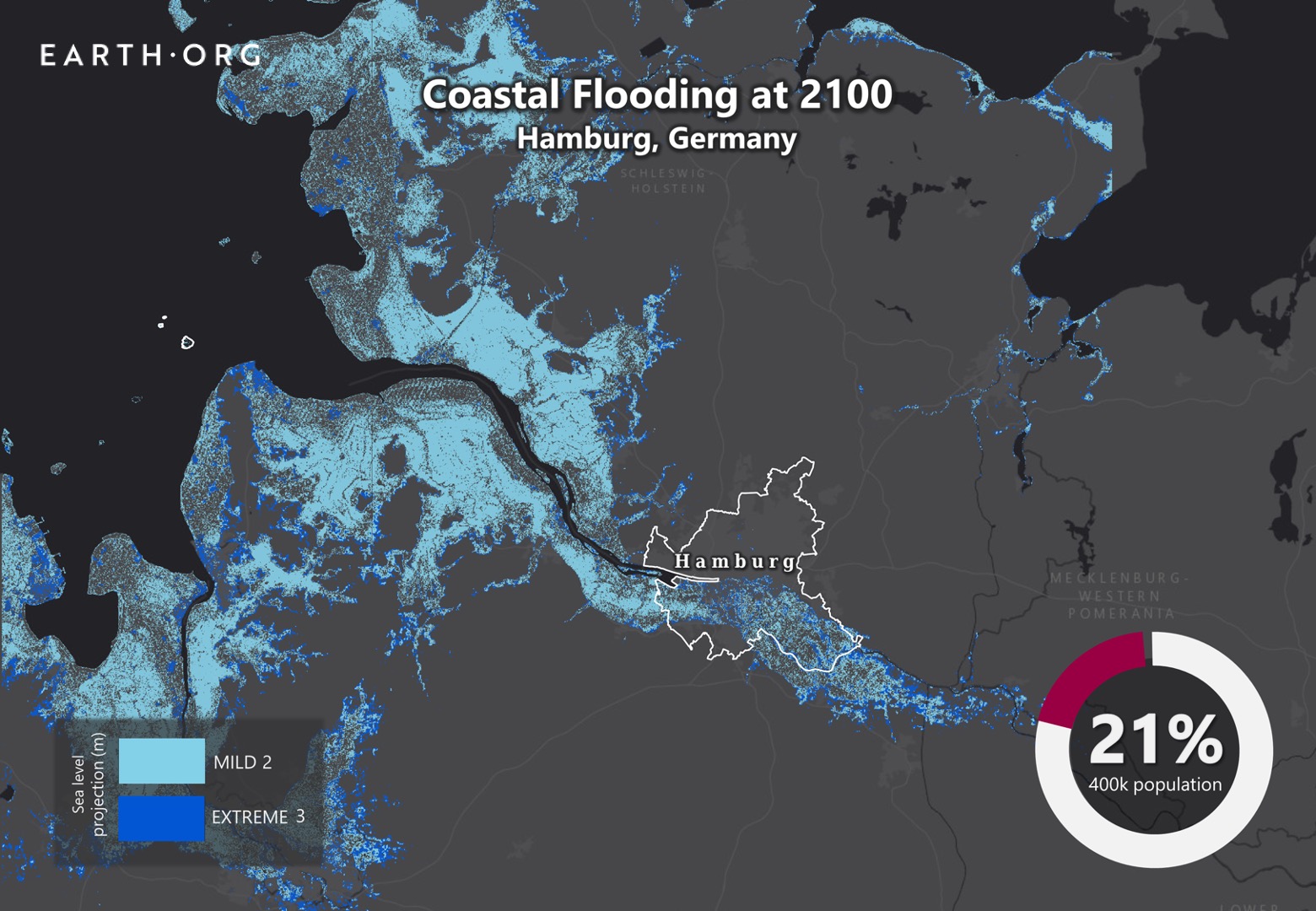
Earth.Org Sea Level Rise Projections by 2100 for two scenarios with the amount of rise in metres indicated (mild = 2m; extreme = 3m). Percentage and total population displacement indicated bottom right.
To tackle the growing threat of global warming, the low-lying city is now counting on a US$592-million renovation project. The plan is to improve dikes in the next 30 years, make them more resilient to high tides and capable of holding back rapidly rising rates of sea levels. The defence system is the city’s best and only option, given that coastal flooding will most likely result in the displacement of more than 20% of Hamburg’s population by 2100, Earth.Org’s estimates.
10. Dubai, United Arab Emirates
Last on the list of top cities at risk of sea level rise is Dubai. The most populous city in the United Arab Emirates is a concentration of skyscrapers, luxury hotels, and resorts, most of which are located on the seaside and built right above sea level.
With the exception of some iconic buildings like the Burj Khalifa, most structures are built on sand with shifting foundations. The Dubai Eye, world’s tallest Ferris wheel, had its base completely reconstructed because of its dangerous instability. The problem here is that the city has been focused on short-term rewards. Many of the incredible structures in Dubai attract tremendous amounts of investment and consumption, yet the aforementioned long-term problems have been largely ignored. The city continues to disregard the threat of sea level rise and preventive measures do not seem to be on the government’s radar.
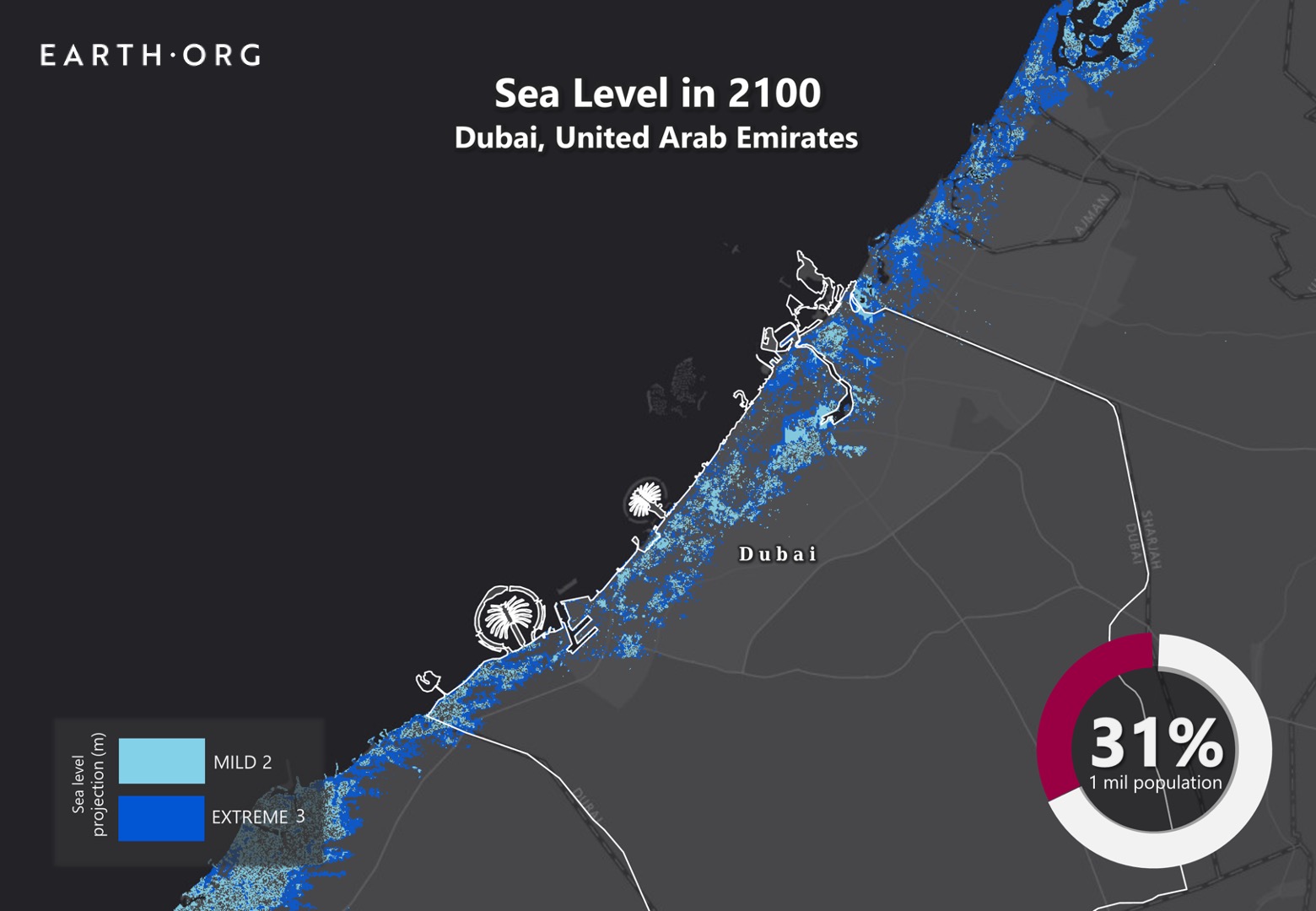
Earth.Org Sea Level Rise Projections by 2100 for two scenarios with the amount of rise in metres indicated (mild = 2m; extreme = 3m). Percentage and total population displacement indicated bottom right.
But Dubai has experienced city-wide flooding from torrential rain before and growing sea waters have started to engulf the remains of the failed World Islands project – an archipelago of small artificial islands constructed in the shape of a world map. If the current trend persists with no action taken, nearly all the infrastructure in Dubai could be underwater by 2100, with approximately one million people displaced as a result.
Check out our Data Visualization page on Sea Level Rise here.








